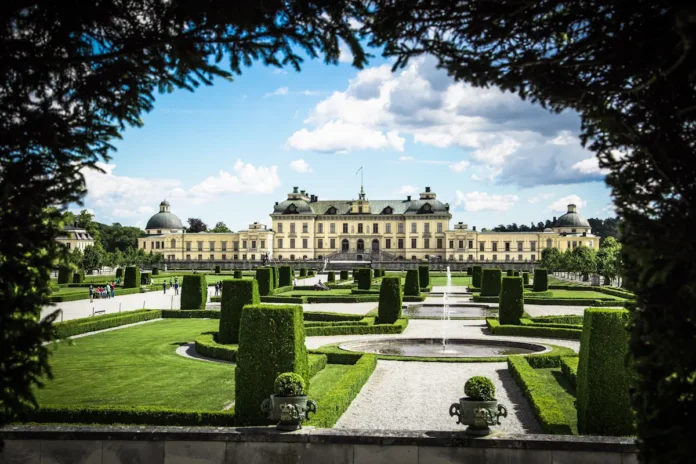Drottningholm Palace, a UNESCO World Heritage site dubbed the “Versailles of Scandinavia,” is Sweden’s best-preserved 17th-century Baroque palace.
Designed by Nicodemus Tessin the Elder, it serves as the current royal residence while offering public access to its opulent interiors, the Chinese Pavilion, and the Drottningholm Palace Theatre—Europe’s finest preserved 18th-century venue with original stage machinery. Its gardens blend Baroque grandeur with romantic English landscapes.
Unveiling Drottningholm Palace’s storied past
Drottningholm Palace, a magnificent architectural marvel, traces its origins to the late 16th century. It was then that King Johan III and Queen Katarina Jagellonica first established the royal residence. However, the palace’s most significant transformation occurred in the late 17th century under the guidance of architect Nicodemus Tessin the Elder, commissioned by Queen Hedvig Eleonora.
The palace embodies the architectural ideals of its time, strongly influenced by French prototypes, particularly the Palace of Versailles. Over the centuries, successive monarchs have left their distinctive mark on the estate. Queen Kristina and King Gustav III were particularly instrumental in expanding its grandeur and meticulously renovating interiors. They added remarkable features like the unique Palace Theatre and the exotic Chinese Pavilion.
Drottningholm Palace: A living heritage of Swedish royalty
In 1991, Drottningholm became Sweden’s first UNESCO World Heritage Site, recognized for its exceptional preservation and representation of 17th- and 18th-century European royal architecture. The palace complex is remarkable not just for its architectural beauty but for its remarkable integrity—maintaining original interiors, gardens, and even an 18th-century theater with its original machinery intact.
Today, Drottningholm serves as the permanent residence of King Carl XVI Gustaf and Queen Silvia, with the southern wing reserved for the royal family. The remainder of the palace and its expansive grounds are open to the public. This allows visitors to explore this living piece of Swedish royal history.
The majesty of Drottningholm Palace gardens
The stunning palace gardens are a testament to timeless beauty and grandeur, epitomizing one of the finest Baroque landscapes in Europe. The palace’s famous gardens were created in the 17th century by the well-known Swedish architect Nicodemus Tessin the Elder.
Formal parterres, terraces, water features, and a vast woodland park are just a few of the many features found in the roughly 200-hectare palace gardens. Highlights include:
- The Baroque Garden: adorned with terraced terraces and fountains.
- The English Garden, featuring meandering paths and naturalistic plantings.
- Chinese Pavilion (Kina Slott): An exquisite 18th-century pavilion with distinct Chinese-inspired design.
Public access to the Drottningholm Palace gardens is available all year round. In the summer, the garden becomes a well-liked gathering place for outdoor concerts, picnics, and leisurely walks. This makes it a beloved spot for both locals and tourists alike.
A royal treasure for all
While the southern wing remains a private royal residence, the palace’s accessibility allows both Swedish citizens and international visitors to experience the grandeur of royal life. It stands as a unique cultural institution—part museum, part living history, and entirely a treasure of national importance.
As you explore Drottningholm Palace, you’re not just walking through a historical site but experiencing a continuing story of Swedish royal heritage—a story that continues to unfold with each passing generation.











